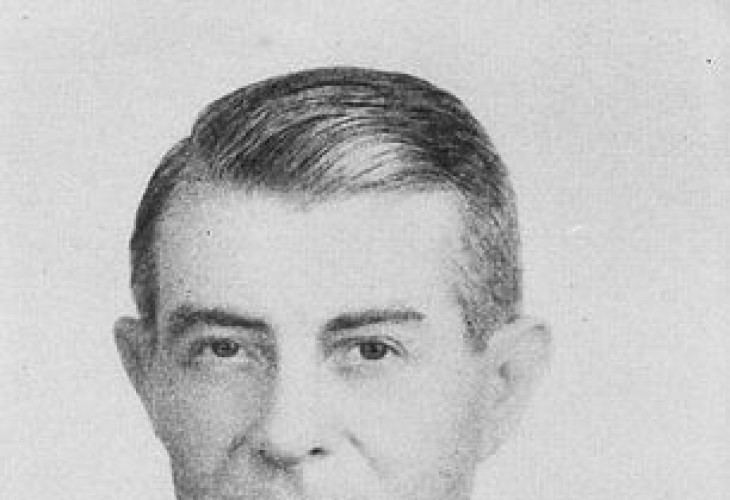Allegiance United States Died 1984 Years of service 1913–1946 | Name Jay MacKelvie | |
 | ||
Battles/wars World War IWorld War II Awards Bronze Star MedalPurple HeartGeneral Service Cross (Great Britain)Legion of HonorCroix de Guerre with Palm (France)Order of the Patriotic War 2nd Class, (Soviet Union) Place of burial Arlington National Cemetery, Arlington, Virginia, United States | ||
Brigadier General Jay W. MacKelvie (September 23, 1890 – December 5, 1985) was a career United States Army officer. He was prominent during World War II for being relieved of his command of the 90th Infantry Division shortly after the Normandy landings.
Contents
- Early life and start of career
- World War II
- Awards and decorations
- Later career
- Death and burial
- Family
- References

Early life and start of career
Jay Ward MacKelvie was born in Esmond, Kingsbury County, South Dakota on September 23, 1890.
MacKelvie enlisted in the United States Army in 1913, and was assigned to the 7th Cavalry Regiment. By 1915 he had risen to non-commissioned officer (NCO). MacKelvie advanced to sergeant major before receiving his commission as a second lieutenant in 1917.
Originally assigned to the Cavalry Branch, MacKelvie later transferred to the Field Artillery Branch. He joined the 78th Field Artillery Regiment for World War I, and took part in the St. Mihiel Offensive in 1918.
He remained in the service after World War I and in the subsequent interwar period, receiving promotion to first lieutenant in 1917, temporary Captain from 1917 to 1919, permanent captain in 1920, major in 1933, and lieutenant colonel in 1940. MacKelvie completed the Field Artillery Battery Officers' Course in 1923, the U.S. Army Command and General Staff School in 1932, and the U.S. Army War College in 1936.
World War II
After service in the War Department's Plans Division at the start of World War II brought him to the attention of General George Marshall, the Army Chief of Staff, in 1942 he was promoted to brigadier general and named commander of the 85th Division Artillery. He served until 1943, when he was appointed commander of the 7th Division Artillery. From 1943 to 1944 MacKelvie commanded the XII Corps Artillery.
MacKelvie was named commander of the 90th Infantry Division in 1944 and participated in the invasion of Normandy. Shortly after the invasion, the VII Corps commander, Major General Joseph Lawton Collins decided that the division was not performing satisfactorily in combat. As a result, he relieved MacKelvie and two regimental commanders.
MacKelvie had been nominated for promotion to temporary major general while in command of the 90th Division, but after his relief the nomination was withdrawn.
MacKelvie was relieved without prejudice, and Collins made clear that he thought MacKelvie was capable of continuing to exercise command, especially of Artillery units. After being relieved from command of the 90th Division MacKelvie was assigned to command the 80th Division Artillery, serving until 1945.
From 1945 until his 1946 retirement MacKelvie served as commander of the V Corps Artillery.
Awards and decorations
MacKelvie's awards and decorations included: two awards of the Bronze Star Medal; Purple Heart; General Service Cross (Great Britain); Legion of Honor and Croix de Guerre with Palm (France); and Order of the Patriotic War 2nd Class, (Soviet Union).
Later career
After retiring from the military, MacKelvie resided in Battle Creek, Michigan. In the 1950s and 1960s he was a civil defense consultant, chairman of Battle Creek's Civil Defense Advisory Council, and a member of Michigan's Civil Defense Advisory Council. MacKelvie was a member of the Calhoun County Board of Social Welfare, and was also involved in several civic projects, including the creation of the Hart-Dole-Inouye Federal Center and serving as vice president and president of the board of directors for the Battle Creek Civic Art Center. In 1964 his wife and he relocated to Denver, Colorado so they could live closer to their son Philip's family.
Death and burial
MacKelvie died in Denver, Colorado on December 5, 1985. He was buried at Arlington National Cemetery, Section 59 Lot 532.
Family
In 1924, MacKelvie was married to Ethel Leonard (1896-1985) of Battle Creek. They were the parents of two sons, Jay W. MacKelvie Jr. and Philip A. MacKelvie.
